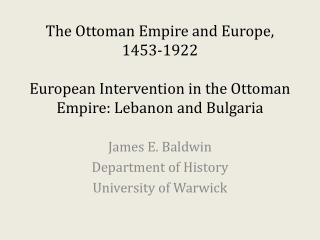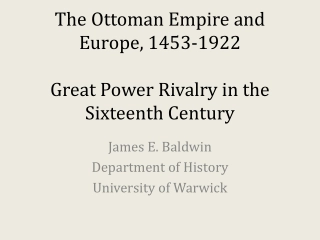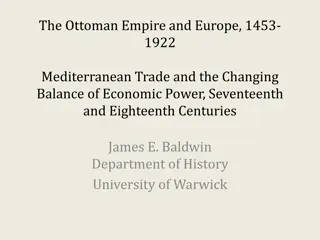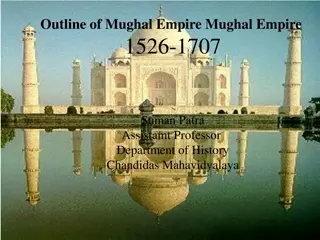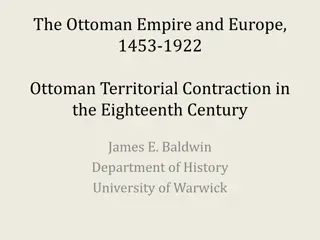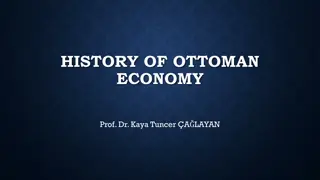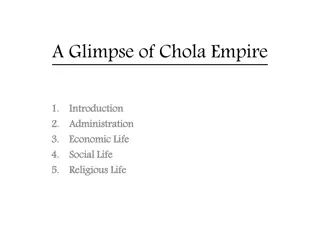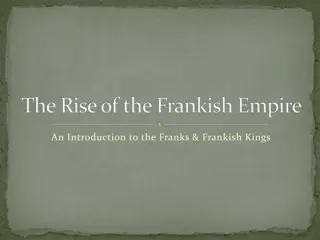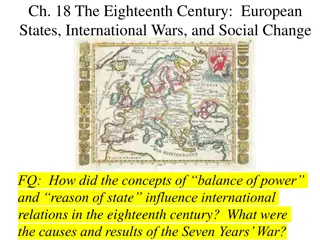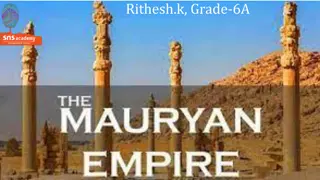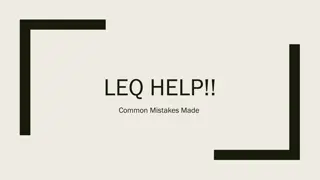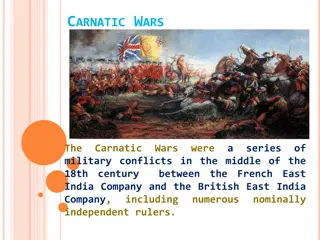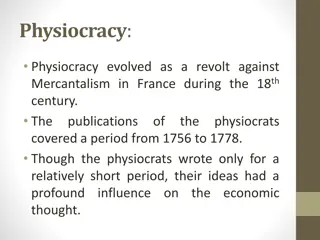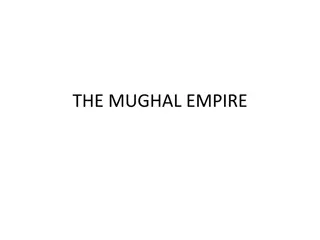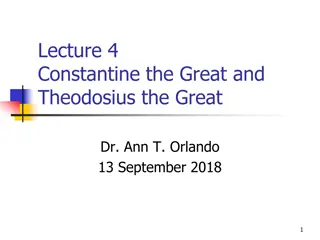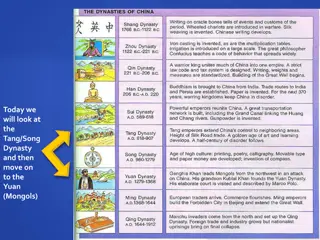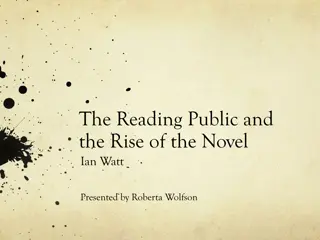Rise and Fall of the Ottoman Empire's Military Power in the 18th Century
The Ottoman Empire's military success in the 18th century was attributed to their expertise in using gunpowder, loyal soldiers, strong organization, multilingual education, and strategic planning. However, the empire faced decline due to dated cultural practices and increasing European power, leading to loss of territories, military control, and economic stability. Notable battles like Khotyn in 1621 and Vienna in 1683 marked pivotal moments in Ottoman history.
Download Presentation

Please find below an Image/Link to download the presentation.
The content on the website is provided AS IS for your information and personal use only. It may not be sold, licensed, or shared on other websites without obtaining consent from the author. Download presentation by click this link. If you encounter any issues during the download, it is possible that the publisher has removed the file from their server.
E N D
Presentation Transcript
Ottoman Army The Ottoman Empire by the end of the 18th Century. By: Alia Waleed, Manar El-Sallab and Ruby Adel
Topics: 1)Ottoman Military 1)Most significant battles 1)Devshirme System
Ottoman Military: Reasons for the success of the military in the Ottoman Empire: The Ottomans were experts at using gunpowder as a tool for their battles. Slaves in the army were strong and loyal to the Sultan. Had excellent political and military organization. People in the military were fully educated and were able to learn, understand and speak several different languages along with their native language. Were able to plan and understand all aspects of war.
Rise and Fall Rise of the ottoman empire was because of the decline of the Middle East s political systems. The reason behind this decline was because the Middle East s culture was becoming old and constantly used, along with it s civilizations. In the 17th century, the Ottoman empire s decline was basically the rise of Europe. The Ottoman empire later lost many lands, lost the control of its military and had trouble with its economy and politics. Then the rulers started to become more weak after the ten rulers that helped the empire become successful. The empire declined in sultan Mehmed VI s reign.
Battle of Khotyn (1621) The battle was between a Polish-Lithuanian Commonwealth army and the Ottoman army, it took place between the 2nd of September 1621 and 9th of October 1621, near Khotyn (Ukraine). Leaders of the battle were: Sultan Omar II, Khan Temir, Canibek Girey, and Grand Vizier Ohrilli Huseyin Pasha. Grand Hetman of Lithuania Jan Karol Chodkiewicz occupied all forces of Sultan Omar until he dies. The Ottomans deserted their army or military that protects them from their enemies, due to the losses they had during the attacks and season or climate changes. The result was the victory of the Polish-Lithuanian Commonwealth army after a month.
Battle of Vienna (1683) The Ottomans started to siege Vienna on July the 14th 1683 with approximately 138,000 men with only 50,000 that were professional turks who actually participated, they stayed there for almost 5 months. The battle took place on November the 12th. Led by Sultan Suleiman I, who was short on camels. His goal was to destroy the land and make it weaker for a later attack. For the European kingdoms and the Ottoman empire, the battle was a turning point in their three hundred year struggle. 16 years later, the Austrian habsburgs took over south Hungary and Transylvania.
Painting of the Battle of Vienna Placed in the Museum of Military History in Vienna
Siege of Plevna (1877) Ottoman army vs. Russian and Romanian army. Included four different battles. Three of them were defensive for the Ottomans and the last was the Ottomans defeat. It took place in Bulgarian town that the Ottomans ruled. In the first three battles, the Romans and Russians took parts of the land but the Ottomans took their land back. In the last battle, the Romanians and Russians took the land The Ottomans were left in a destroyed, hopeless position. Were forced by france to sign the treaty of San Stefano, therefore, the russians
Devshirme System They started using the system in the late 14th Century. The Ottoman government forced Christian children to convert to Islam and forced them to work in the army for them, while other parents forced their children to go because they knew that they weren t be considered slaves. Boys were evaluated every once in awhile on capabilities and intelligence to see if they would be able to go up a level and have harder requirements or not. When the Ottoman Army conquered Christian communities, the community was supposed to give up 20% of it s children. Some of them worked in the military corps and were called Janissaries. They were taught 3 different languages which are Arabic, Persian and Turkish.
Devshirme System Some of the boys were taken to work for the Ottoman ruler, who is the Sultan. Boys who showed their loyalty to the sultan were granted jobs such as: - Guards Janissary guards protecting the sultan in the prayers. - Scribes - Governors - Soldiers - Prime ministers Boys started entering the Devshirme system at the age of 6.
Devshirme System Devshirme System Janissaries Sultan Janissaries are professional and are given many advantages. Janissaries included up to 100,000 by the 17th Century. Army members in an organized and synchronized training
Janissaries Janissaries were a group in the standing army of the ottoman empire Janissaries were formed from the late 14 century to 1826 Christians that later converted to Islam were mainly the ones that joined the janissaries They started revolting in the 18th century due to the interference of western soldiers
Resources "Battle of Khotyn (1621)." Battle of Khotyn. World Heritage Encyclopedia, n.d. Web. 16 Nov. 2016. <http://self.gutenberg.org/articles/battle_of_khotyn_(1621)>. "Battle of Plevna (1877)." Familypedia. N.p., n.d. Web. 16 Mar. 2016. <http://familypedia.wikia.com/wiki/Battle_of_Plevna_%281877%29>. "Devshirme System [Gravure]," in Children and Youth in History, Item #464, https://chnm.gmu.edu/cyh/primary-sources/464 (accessed March 16, 2016). Metin. "Devshirme System of the Ottoman Empire!" Devshirme System. N.p., 19 Nov. 2015. Web. 16 Mar. 2016. The Editors of Encyclop dia Britannica. "Siege of Pleven." Encyclopedia Britannica Online. Encyclopedia Britannica, 5 Dec. 2014. Web. 16 Mar. 2016. <http://www.britannica.com/event/Siege-of-Pleven>. "The Janissaries." JANISSARIES. Historyworld, n.d. Web. 16 Mar. 2016. The Editors of Encyclop dia Britannica. "Mehmed VI." Encyclopedia Britannica Online. Encyclopedia Britannica, n.d. Web. 17 Mar. 2016. "Janissary Turkish Military." Britannica. N.p., n.d. Web. 27 Mar. 2016.
Picture Resources Battle of Vienna 1863. Digital image. Battle of Vienna. IDPE, n.d. Web. 16 Mar. 2016. <http://www.wien-vienna.com/index.php?ID=1835>. Children Studying the Janissary Process. Digital image. Chapter 14. N.p., n.d. Web. 16 Nov. 2016. <http://aptermproject.weebly.com/chapter-14.html>. https://shakti108.files.wordpress.com/2011/01/ottoman.gif http://www.lasalle.edu/~mcinneshin/356/wk04/images/land%20ships.jpg http://ottomanempire.info/process2.jpg http://www.ottomanempirehistory.com/Ottoman-Empire-Military-2.jpg http://static.topyaps.com/wp-content/uploads/2010/07/vienna-battle.jpg https://upload.wikimedia.org/wikipedia/commons/7/75/Walka_o_sztandar_turecki.jpg http://www.wien-vienna.at/images/tuerken1.jpg J., YJ Jenny. Ottoman Empire. Digital image. Jspivey The Middle East. N.p., 2009. Web. 16 Mar. 2016. <https://jspivey.wikispaces.com/Factors+of+Analysis+YJ.J>. Metin. Devshirme System. Digital image. Devshirme System of the Ottoman Empire! N.p., 19 Nov. 2015. Web. 16 Mar. 2016. Siege of Plevna. Digital image. Battle of Plevna. N.p., n.d. Web. 16 Mar. 2016. <http://familypedia.wikia.com/wiki/Battle_of_Plevna_%281877%29>.


